Dr. José Rizal Works.
The National Hero of the Philippines, Dr. Jose Rizal, is one of the most interesting, brilliant, charismatic and intelligent figures of the Philippine's history. There seems to be always something new to discover about him. Rizal as sportsman and excellent student, as a world traveller, a romantic, an artist, a political activist, who spoke 22 languages and dialects, and of course, as a writer and martyr. But Dr. Rizal was also an ophthalmologist, not just an ophthalmologist but a pretty good one. Rizal the hero and Rizal the ophthalmologist are inseparably linked together.
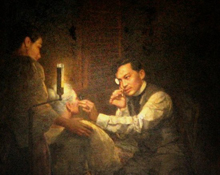
Why did he want to become an ophthalmologist ?
Ophthalmology was not his real passion. But like for his political writings, for which he became famous, was it his destiny who led him. He wrote because of love, love for his country. He became an ophthalmologist also because of love, but love for his mother. His mother was turning blind and he desired to give her back her vision. Just like he wanted to heal his countrymen from the "blindness" by the oppressive foreign power, the Spanish friars.
He did not immediately enroll in medicine when going to the Santo Tomas University in Manila. He enrolled first in the Faculty of Arts and Letters where he studied philosophy and letters. It was only upon learning that his mother was going blind due to cataracts that he decided to study medicine with the intention of specializing in ophthalmology at the university Faculty of Medicine and Surgery. From 1877 to 1882, he studied medicine, agriculture, surveying, and philosophy and letters at the University Santo Tomas where he received his Bachelor of Arts Degree. But, he did not complete his medical studies, he could no longer stand the discrimination by the Spanish Dominican friars against the Filipino students. In 1882, without his parents knowing, he secretly left the Philippines with the help of his older brother Paciano to complete his medical studies in Madrid, Spain.
From 1882 Rizal studied at the Universidad Central de Madrid where he in 1884 earned his licentiate in Medicine . During that time, it was not necessary to follow further medical studies to call oneself a physician or to practice medicine. However, one could go on and obtain a doctoral degree after passing examinations and writing and orally presenting an approved thesis.
In the 19th century, ophthalmology was already a separate specialty in Europe but there were no formal training programs at the universities yet. One became an ophthalmologist under the supervision of a well-known professor. If you were good you were allowed to personally assist your professor in his clinic while surgery. Training was very personalized.
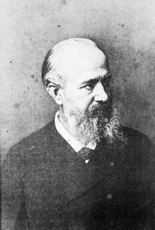
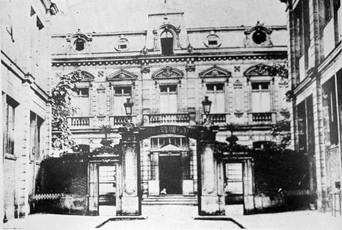
Rizal trained in Paris under the famous surgeon, Dr. Louis de Wecker (left) from November 1885 to February 1886. He worked as an assistant at de Wecker’s clinic (left) during those 4 months. Dr. Louis de Wecker (1832–1906) was one of the foremost ophthalmologists of the 19th century. It was from him that Rizal learned various types of surgery, including the cataract-surgery technique he used to treat his mother. But he could not stay in Paris much longer. He felt that he had learned all the surgical procedures he could learn from Dr. de Wecker.
So he informed Paciano that he would move to Germany. On February 3, 1886 he arrived in Heidelberg where he trained under Dr. Otto Becker (right). He wanted to learn other basic aspects of ophthalmology. Dr. Becker was a pioneer in ophthalmic pathology who wrote numerous works about the eye. He wrote a text on the anatomy of the normal and diseased lens and collected more than 1,800 pathologic specimens. Dr. Otto Becker (1828–1890) was an academic from whom Rizal learned the basics of ophthalmological examination and diagnosis. In Heidelberg Dr. Rizal attended the fifth centenary of the university on August 6, 1886. Three days later he left Heidelberg for Berlin. On August 15, 1886 Dr. Rizal arrived in Leipzig where he attended some lectures on the University of Leipzig. Mainly on History and Psychology. He got befriended with Professor Friedrich Ratzel, a famous historian and with Dr. Hans Meyer, an anthropologist.
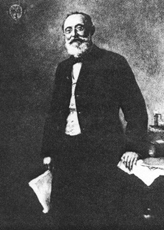
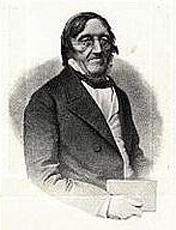
On October 29, 1886 he left Leipzig for Dresden where he met Dr. Adolph B. Meyer, the Director of Anthropological Museum. He only stayed for two days in Dresden. On November 1, 1886 he took the train and arrived that same evening in Berlin.
In Berlin Dr. Rizal met with different scientists, among them Dr. Fedor Jagor, the author of "Travels in the Philippines" who introduced Dr. Rizal to Dr. Rudolf Carl Virchow (1st left) a famous German Anthropologist and to his son Dr. Hans Virchow, Professor of Descriptive Anatomy. He also met a noted German Geographer Dr. W. Joest. During his stay in Berlin Dr. Rizal worked also as an ophthalmologist in the clinic of Dr. Karl Ernest Schweigger (1830-1905), a famous German ophthalmologist (2nd left). Dr. Virchow recognized Dr. Rizal's genius and invited the latter to give lectures before the Ethnographic Society of Berlin. In respons of Dr. Virchow's invitation Dr. Rizal wrote a scholarly paper in German, "Tagalische Verskust" or Tagalog Metrical Art witch he read in April 1887 before the society.
In Berlin he also published his first novel, Noli me Tangere or Touch me not on March 21, 1887. Rizal dedicated the novel to the Philippines. "To my Fatherland".
After touring through Europe Dr. Rizal finally returned home. His longing to his family could not keep him away anymore. He wanted to return home even against the advice of his friends and his loved ones. They all feared for his life after the publication of the Noli and of all the political publications. But Rizal had made up his mind, he returned home to Calamba.
Dr. Rizal reached the Philippines on August 5, 1887. Three days later (August 8) he arrived in Calamba. In Calamba Dr. Rizal established a medical clinic. His first patient was his mother, she was almost blind. But he could not perform any surgical operation because her eye cataract was not yet ripe. But word spread around and patients from Manila and from the provinces all came to Calamba. They all came to see Doctor "Uliman", the doctor who came from Germany. His medical fees were reasonable and even free for the poor. In only a few weeks' time he was able to earn P900 and by February 1888 he earned a total P5,000 as medical fees. But he didn't practice medicine to enrich himself. With the money he earned he opened a gymnasium for the young people where he introduced the European sports.
After all the commotion about the Noli and about Rizal's part in Calamba's Agrarian Troubles the Governor General Terrero summoned Dr. Rizal to Malacañan Palace and advised him to leave the Philippines. There were no official charges against Dr. Rizal but his parents were receiving threats against his life and all of his friends advised him to leave the country. So the Governor General gave him an opportunity to escape the friar's fury. So Dr. Rizal left a second time. He returned to Europe passing Hong-Kong, Japan, United States and finally arriving in London. Then going to Paris in 1889. In 1890 he stayed in Brussels and went back to Madrid. In 1891 he returned to Belgium, in Ghent he published his second novel "El Filibusterismo" on September 18, 1891. After the publication of his second novel Dr. Rizal left Europe and went to Hong-Kong.
Dr. Rizal arrived in Hong-Kong on November 20, 1891. He was welcomed by the Filipino residents and established his residence at N° 5 D'Aguilar Street, n° 2 Rednaxela Terasse, where he opened his medical clinic. Before Christmas he was able to have most of his family to come to Hong-Kong. First arrived his father, his brother and his brother-in-law Silvestre Ubaldo later came his mother and sister Lucia, Josefa and Trinidad. His mother was then 65 and almost blind. Christmas of 1891 was one of the happiest celebrations in Rizal his life, for he had a happy family reunion. To earn a living for himself and his family Dr. Rizal practiced medicine. In due time Dr. Rizal became a well-known and a successful medical practitioner in the British colony. He successfully operated his mother left eye and she was able to read and write again. Beside of being an eye specialist he was a general doctor.
In May 1892 Dr. Rizal made the decision to return to the Philippines. His parents pleaded with him not to return, Paciano told him it was a bad idea ... José had always listened to his older brother but not this time. José left Hong Kong in June, 1892 with a pass of safe conduct from the Spanish Consulate and a letter for the Governor-General. With these two documents he felt relatively safe. He left also two letters behind, not to be opened until after his dead. One was for his family in which he apologized for the troubles he caused them. The other was for his countrymen explaining why he returned.
Up on his return his luggage and the luggage of his sister Lucia was searched by the officers and the soldiers. Afterwards he went to the Malacanang Palace to meet the Governor General. They both met regularly through the week. Jose asked for amnesty for his family and it was granted by the Governor-general. On July 6 Rizal was sent to Fort Santiago as prisoner. The next day he was accused of treason.
He was not treated badly. On July 14 he was told to get himself ready to leave. He didn't know his destination ! He only learned his destination at midnight that night ... Dapitan in Mindanao.
José Rizal build a small house, later a bigger square house, in Dapitan. He added other buildings as well, he began a schoolhouse for boys and practiced medicine. He discovered a love for farming. Yet he was not a free man. He had to report to the commandant when he left the farm and had to return by a certain hour.
